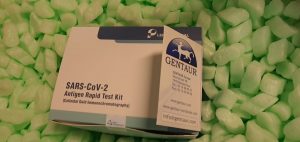These high-density polymorphic KASP SNP markers might be a precious useful resource for map-based cloning of QTL/genes and marker-assisted choice in maize. Moreover, the tactic used to develop SNP markers in maize can be utilized in different species. The outcomes steered that the KASP SNP markers developed on this research have been correct and polymorphic.
Benchmarking the efficiency of Pool-seq SNP callers utilizing simulated and actual sequencing information
Inhabitants genomics is a fast-developing self-discipline with promising purposes in a rising variety of life sciences fields. Advances in sequencing applied sciences and bioinformatics instruments permit inhabitants genomics to use genome-wide info to establish the molecular variants underlying traits of curiosity and the evolutionary forces that modulate these variants by means of house and time.
Nevertheless, the price of genomic analyses of a number of populations continues to be too excessive to deal with them by means of particular person genome sequencing. Pooling people for sequencing is usually a more practical technique in SNP detection and allele frequency estimation due to the next whole protection. Nevertheless, in comparison with particular person sequencing, SNP calling from swimming pools has the extra issue of distinguishing uncommon variants from sequencing errors
Discovering an optimum stability between minimizing info loss and decreasing sequencing prices is important to make sure the success of inhabitants genomics research. Right here, we have now benchmarked the efficiency of SNP callers for Pool-seq information, based mostly on totally different approaches, underneath totally different situations, and utilizing laptop simulations and actual information. We discovered that SNP callers efficiency diverse for allele frequencies as much as 0.35.
We additionally discovered that SNP callers based mostly on Bayesian (SNAPE-pooled) or most probability (MAPGD) approaches outperform the 2 heuristic callers examined (VarScan and PoolSNP), when it comes to the stability between sensitivity and FDR each in simulated and sequencing information.
Our outcomes will assist inform the collection of probably the most acceptable SNP caller not just for large-scale inhabitants research but in addition in circumstances the place the Pool-seq technique is the one possibility, comparable to in metagenomic or polyploid research. which is commonly averted by establishing a minimal threshold allele frequency for the evaluation.

Meta-analysis of SNP-environment interplay with heterogeneity for overlapping information
Meta-analysis is a well-liked technique utilized in genome-wide affiliation research, by which the outcomes of a number of research are mixed to establish associations. This course of generates heterogeneity. Just lately, we proposed a random impact mannequin meta-regression technique (MR) to check the impact of single nucleotide polymorphism (SNP)-environment interactions.
This technique takes heterogeneity into consideration and produces excessive energy. We additionally proposed a hard and fast impact mannequin overlapping MR by which the overlapping information is taken into consideration. Within the current research, a random impact mannequin overlapping MR that concurrently considers heterogeneity and overlapping information is proposed.
This technique is predicated on the random impact mannequin MR and the mounted impact mannequin overlapping MR. A brand new method of fixing the logarithm of the determinant of covariance matrices in probability features can be offered. Exams for the probability ratio statistic of the SNP-environment interplay impact and the SNP and SNP-environment joint results are given.
In our simulations, null distributions and kind I error charges have been proposed to confirm the suitability of our technique, and powers have been utilized to judge the prevalence of our technique. Our findings point out that this technique is efficient in circumstances of overlapping information with a excessive heterogeneity.
